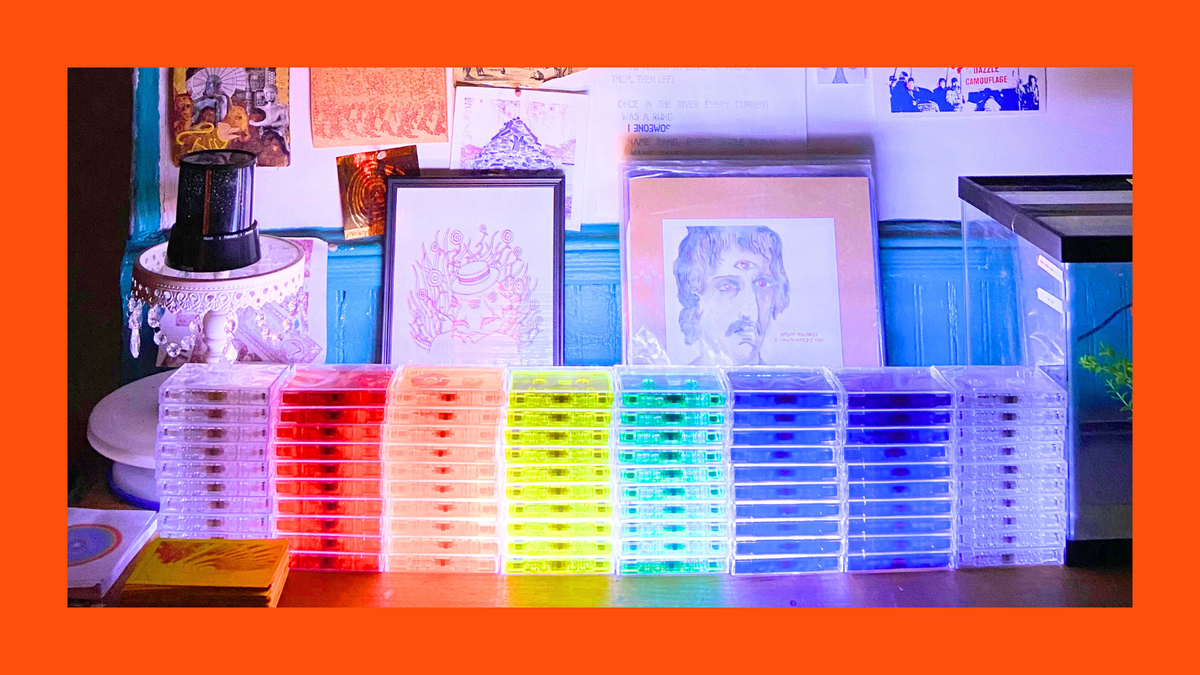How to Quit Streaming
A brief and practical guide

Earlier this week, I published a big feature about musicians who are opting out of hosting their work on corporate streaming platforms in favor of smaller-scale, more community-oriented (and, ideally, financially remunerative) methods of distributing music.

That piece was focused on the artists’ side, but any effort to imagine a more equitable system must inevitably involve listeners as well. I was a longtime Spotify subscriber before ditching it last year in an effort to be the change I want to see in the world, as a musician and journalist who cares deeply about this stuff. I figured I’d use this space to talk briefly about the process of quitting.
Here’s how you do it:
- Click the profile-picture icon on the top right of the Spotify desktop app.
- Select “Account” from the drop-down menu.
- Log in to Spotify from your web browser, if prompted.
- Scroll down to the button that says “Close account,” under the “Security and privacy” heading.
- Click the big green button that says “Close my account and delete my data.”
- If it asks if you’re sure, click “Yes,” because you are sure, damnit—a whole new world of renewed deep connection to your favorite records awaits you, as well as the satisfaction of ending your monthly contribution to a multi-billion dollar corporation hell-bent on turning those records into worthless, disposable content.
- Spend the extra $11.99 per month you now have in your pocket on new records, either physical copies or digital files, by artists you want to support.
(If you’re a subscriber to one of the other big streamers, the intermediary steps may vary slightly, but the end results will be the same.)
I’m being glib, but not just for the sake of it: I want to remind anyone who’s been sitting on the fence for a while that quitting really is that easy. You can just do it! Everything will be fine.
I have found, since canceling my Spotify subscription, that I really do have renewed appreciation for the records I already have. I own a lot of LPs, but not an especially vast digital music collection, so when I’m walking around with headphones on, there’s a limited selection of music available to me. This turns out to be a good thing. Early on, I’d get frustrated that I couldn’t hear a particular Prefab Sprout song that would suit the early-evening light and my wistful mood just perfectly. But pretty soon, I realized that, say, the Pink Must record sitting on my phone’s hard drive could take me someplace just as beautiful.
The feeling of appreciation runs deeper than any particular song or album. Even as someone who plays music and has built my life around it, I sometimes—more frequently than I would like to admit—get into a funk where a lot of it seems lifeless and empty, like it holds no meaning for me. I’m not saying the overabundance of streaming is entirely responsible for that feeling, but it is certainly a contributing factor. “I realized I was overconsuming,” Island House records founder Tim McManus told me at one point in an interview for my recent story, talking about his past relationship to streaming as a listener. “Music wasn’t giving me as much joy as it used to.” I know the feeling, and I must say that quitting has brought a lot of the old joy back.
Granted, there are some things you’ll have to figure out after you quit, especially if you’re not accustomed to listening to music in other ways. A while back, I talked to Virginia K. Smith at our fellow worker-owned publication the New York Groove about how I’ve adapted: basically, by buying even more records than I did before, and listening to even more radio. I use Bandcamp to sample things, and also hear a fair amount through PR advance copies. If I find myself returning again and again, unless I’m flat broke, I buy a physical copy. If I’m trying to be frugal, I’ll go for a digital version.
There’s been some great, extremely detailed, nerdy-but-not-snobby discussion in the Hearing Things Discord recently about people’s preferred methods and pieces of software for organizing and listening to large digital music libraries. Like I said, I’m more of a records guy, so I won’t try to get into that here. If you want to join the discussion, or just learn from the experts—and you’re not a paid Hearing Things subscriber already—why not start today? It costs less than an album (or a Spotify subscription) per month.
I’ll close by saying this: Music just sounds better when you’re not streaming it. Not only because the audio quality is often literally higher, but because you’re forging a connection with what you’re hearing that’s strengthened by your choices, your commitment, your active participation—and, if you bought it at a shop or the merch table at a show, by the lasting imprint of those in-person interactions, however brief they might have been. Spotify can do a lot of things, but it can’t compete with that.






